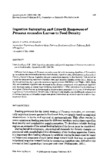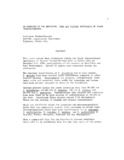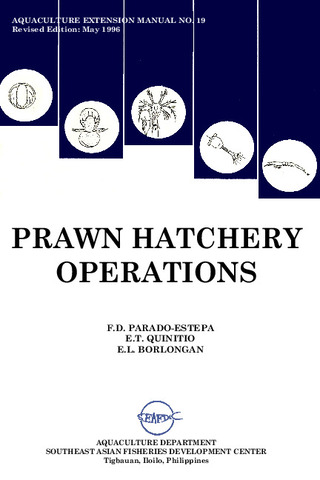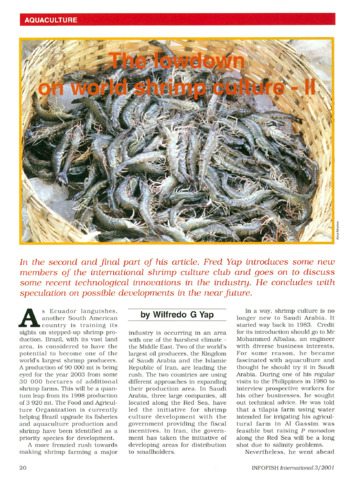Ingestion saturation and growth responses of Penaeus monodon larvae to food density
Share
Abstract
Different larval stages of Penaeus monodon were fed with increasing densities of Tetraselmis sp. to evaluate the relationship between food density, ingestion rates, development and growth of Penaeus monodon larvae. Ingestion showed a saturation response to food density. This served as a basis for determining maximum ingestion rates and incipient limiting levels (ILL), defined as the lowest food density to provide maximum ingestion rates (McMahon and Rigler, 1963). Both ILL and maximum ingestion rate increased as larval stage progressed, with maximum ingestion rate reaching a peak at mysis 3 and declining at postlarva 1. When protozoea 1 and protozoea 2 were given Tetraselmis sp. at levels equal to or above their respective ILL's, rate of development to protozoea 3 was enhanced. Growth rate, in terms of total length, was significantly enhanced in protozoea 3 and mysis 1 if earlier stages were given Tetraselmis sp. at levels equal to or above their respective ILL's.
Suggested Citation
Loya-Javellana, G. N. (1989). Ingestion saturation and growth responses of Penaeus monodon larvae to food density. Aquaculture , 81(3-4), 329-336. https://doi.org/10.1016/0044-8486(89)90157-9
Subject
Taxonomic term
Collections
- AQD Journal Articles [1248]
Related items
Showing items related by title, author, creator and subject.
-
An overview of the nutrition, feed and feeding techniques of prawn penaeid/shrimps
Piedad-Pascual, Felicitas (Philippine Council for Aquatic and Marine Research and Development, 1989)This paper echoes what transpired during the first International Conference of Penaeid Prawns/Shrimps held in Iloilo City in December 4-7, 1984, particularly on the Nutrition nd Feed Development. Around 25 papers were ... -
Prawn hatchery operations
Parado-Estepa, Fe D.; Quinitio, Emilia T.; Borlongan, Emeterio L. (Aquaculture Department, Southeast Asian Fisheries Development Center, 1996-05)The manual, an updated version of the 1984 SEAFDEC/AQD manual, presents the underlying principles and step-by-step instructions of prawn larval and post-larval rearing. The techniques described are not only applicable to ... -
The lowdown on world shrimp culture - II
Yap, Wilfredo G. (INFOFISH, 2001)This paper introduces some new members of the international shrimp culture club and goes on to discuss some recent technological innovations in the industry, particularly the polyculture of tilapia (mainly Oreochromis ...




